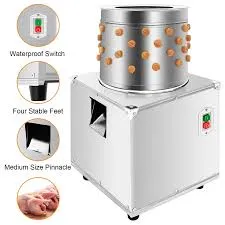Advanced Meat Vacuum Packaging Machines for Enhanced Freshness and Extended Shelf Life Solutions
8 月 . 06, 2024 13:04 Back to list
Advanced Meat Vacuum Packaging Machines for Enhanced Freshness and Extended Shelf Life Solutions
The Importance of Meat Vacuum Packaging Machines
In today’s fast-paced world, food preservation has become a paramount concern for both consumers and producers. Among various food preservation techniques, vacuum packaging has emerged as one of the most effective methods, especially for meat products. This article delves into the significance of meat vacuum packaging machines, exploring their functionality, benefits, and impact on the food industry.
What is Meat Vacuum Packaging?
Vacuum packaging involves removing air from a package before sealing it, effectively creating a low-oxygen environment that significantly slows down the growth of bacteria and fungi. For meat products, where spoilage can occur quickly due to microbial activity, vacuum packaging is an essential practice. Meat vacuum packaging machines automate this process, providing efficiency and consistency in packing meat products.
How Do Meat Vacuum Packaging Machines Work?
Meat vacuum packaging machines operate through a simple yet efficient process. Initially, the meat product is placed inside a plastic bag or pouch, which is designed to withstand vacuum sealing. The machine then removes all air from the pouch, creating a vacuum. Once the air is extracted, the machine seals the pouch using heat, ensuring that no air can re-enter. Some advanced models offer additional features, such as marinating functions or external vacuum sealing options for various package sizes.
Benefits of Meat Vacuum Packaging Machines
meat vacuum packaging machine

1. Extended Shelf Life One of the most significant advantages of vacuum packaging is its ability to extend the shelf life of meat products. By eliminating air, the growth of spoilage-causing bacteria is slowed, allowing meat to stay fresh for longer periods. This is particularly beneficial for retailers and consumers who may wish to store meat for an extended time without compromising quality.
2. Enhanced Flavor Vacuum packaging also helps in marinating meats more effectively. When air is removed, the marinade can permeate the meat more thoroughly, enhancing its flavor and tenderness. This process not only improves the quality of ready-to-cook meals but also adds value to the product.
3. Reduced Freezer Burn When meat is frozen without vacuum sealing, it can suffer from freezer burn, which occurs due to air exposure. Vacuum packaging prevents this by keeping the meat tightly sealed in its environment, ensuring that the quality, texture, and taste remain intact even after freezing.
4. Space Efficiency Vacuum-sealed packs occupy less space when compared to conventional packaging. This space efficiency is beneficial for both storage in homes and transportation in commercial settings, allowing for more effective inventory management.
5. Environmentally Friendly With increased emphasis on sustainability, vacuum packaging can also reduce waste. By increasing shelf life and minimizing spoilage, less meat goes to waste, which is a significant concern in the food industry today.
Conclusion
As the demand for fresh and preserved meat products continues to grow, meat vacuum packaging machines play a crucial role in the food industry. They not only enhance the shelf life and quality of meat but also cater to the growing consumer demands for convenience and sustainability. Investing in high-quality vacuum packaging technology is essential for meat producers, retailers, and consumers aiming to ensure their products are safe, flavorful, and long-lasting. In an era where food safety and quality are at the forefront, the significance of meat vacuum packaging machines cannot be overstated.
-
school
NewsJul.10,2025
-
Vacuum Packing Machine - Efficient & Reliable Vacuum Packaging Solutions for Food & Industrial Use
NewsJun.10,2025
-
High-Quality European Rabbit Cage Durable Welded Rabbit Cage Wire Mesh Supplier
NewsJun.10,2025
-
High-Efficiency Air Inlet Window for Optimal Poultry Ventilation & Cooling
NewsMay.30,2025
-
High-Efficiency Evaporative Cooling Pads Durable & Energy-Saving
NewsMay.30,2025
-
Automatic Egg Collecting Machine High-Efficiency Poultry Farm Solutions
NewsMay.29,2025






